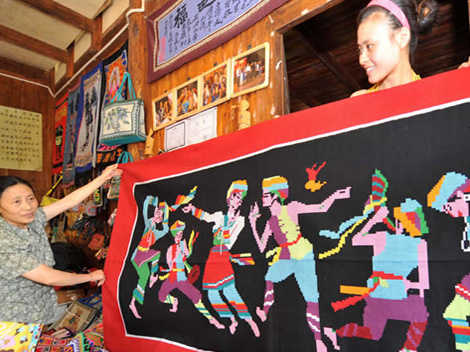
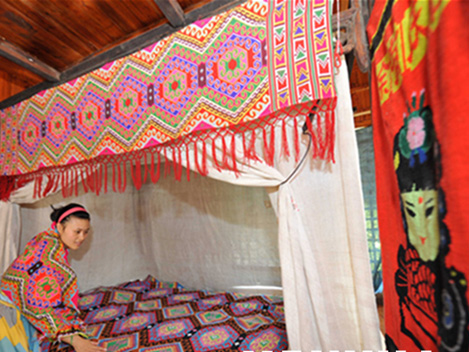
One of the largest minority groups in China lives deep in the remote, mountainous region on the borders of Hunan, Hubei and Sichuan provinces. It is the "Tujia" (literally "Soil Family") ethnic minority. Among well known Tujia customs are "Wedding Tears", when the bride weeps on her wedding day, and the Funeral Dance, when there is dancing and celebration rather than mourning at a funeral.
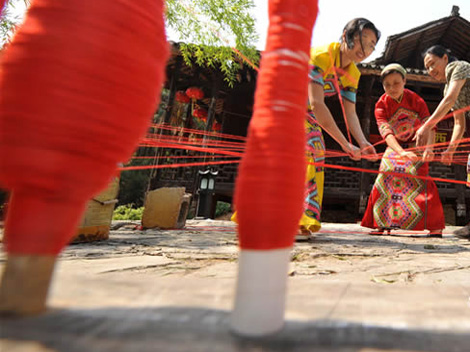
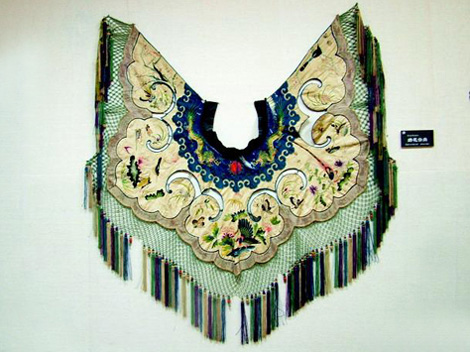
People of the Tujia ethnic minority are adept at the handicrafts of stone carving, embroidery, paper-cuts and textile printing. But they are most famous for their Xilankapu brocade.
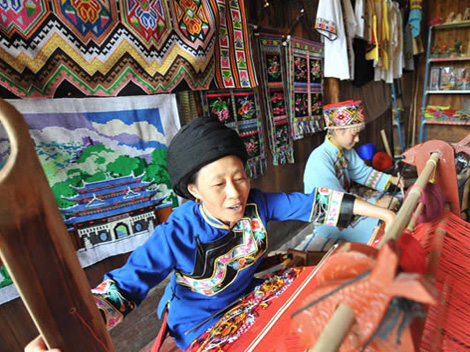
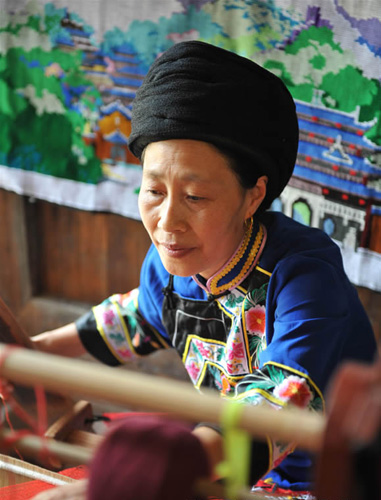
Tujia Brocade, known as XilankSapu,has a history of 2,000 or more years. It was first worn in the Qin and Han Dynasty imperial palaces.
"Xilan" in the Tujia language means "bedspread" and "Kapu" means "flower". Xilankapu was hence originally a flower brocaded bedspread, but was also fashioned into cushion covers and pillow cases, among other things. Xilankapu is hand woven on a narrow lathe loom with a red, blue, black, white and yellow thread warp and multi-colored silk, cotton or wool weft.
There are more than 200 Xilankapu patterns, each significant in its own way. The brocade designs are abstract images of real-life objects in contrasting colors, all highly decorative. In contrast to palace brocades, Tujia brocade was made in the countryside and used by farmers. It consequently has a strong folklore flavor that often provides insight into the ancient China totem.
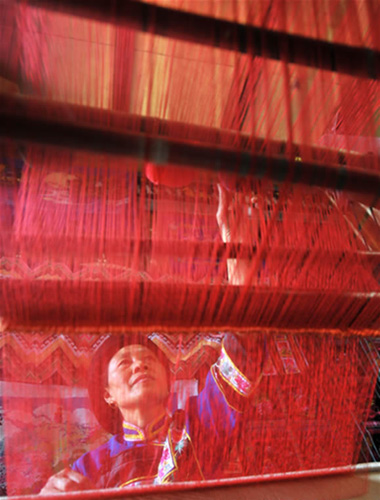
Traditional patterns fall under the three broad headings of natural images, geometric patterns and language that relate to Tujia daily life. They include tiger stripes, leopard and deer spots, colorful golden pheasant feathers, clouds, waves and arched bridges. There are also images of butterflies alighting on peonies, double phoenixes facing the sun, magpies singing on plum trees, and bridal entourages to the bridegroom's home. Master Xilankapu handicraftsman can create designs without a pattern.
Weaving Xilankapu is an essential skill for Tujia girls. They learn it from their mothers or elder sisters from the age of 11 or 12 years old. Both the number of works they produce and their weaving technique are considered indicators of character as well as skill. Xilankapu is main aspect of the Tujia dowry. The Xilankapu wedding dress a Tujia maid finishes the night before her wedding is the most valuable and beautiful object she will ever own..
Xilankapu is so prominent in Tujia culture there are songs about it:
"My darling is so deft at weaving Xilankapu, it is better than any other dowry.
I ask you to take my Xilankapu from off my head and marry me..."





